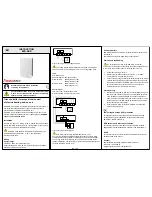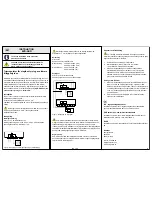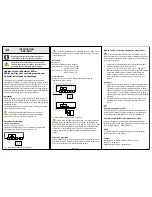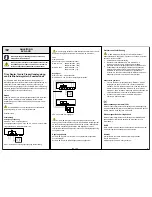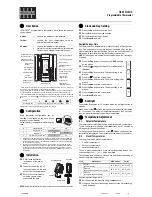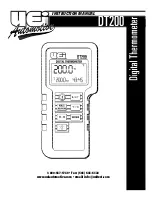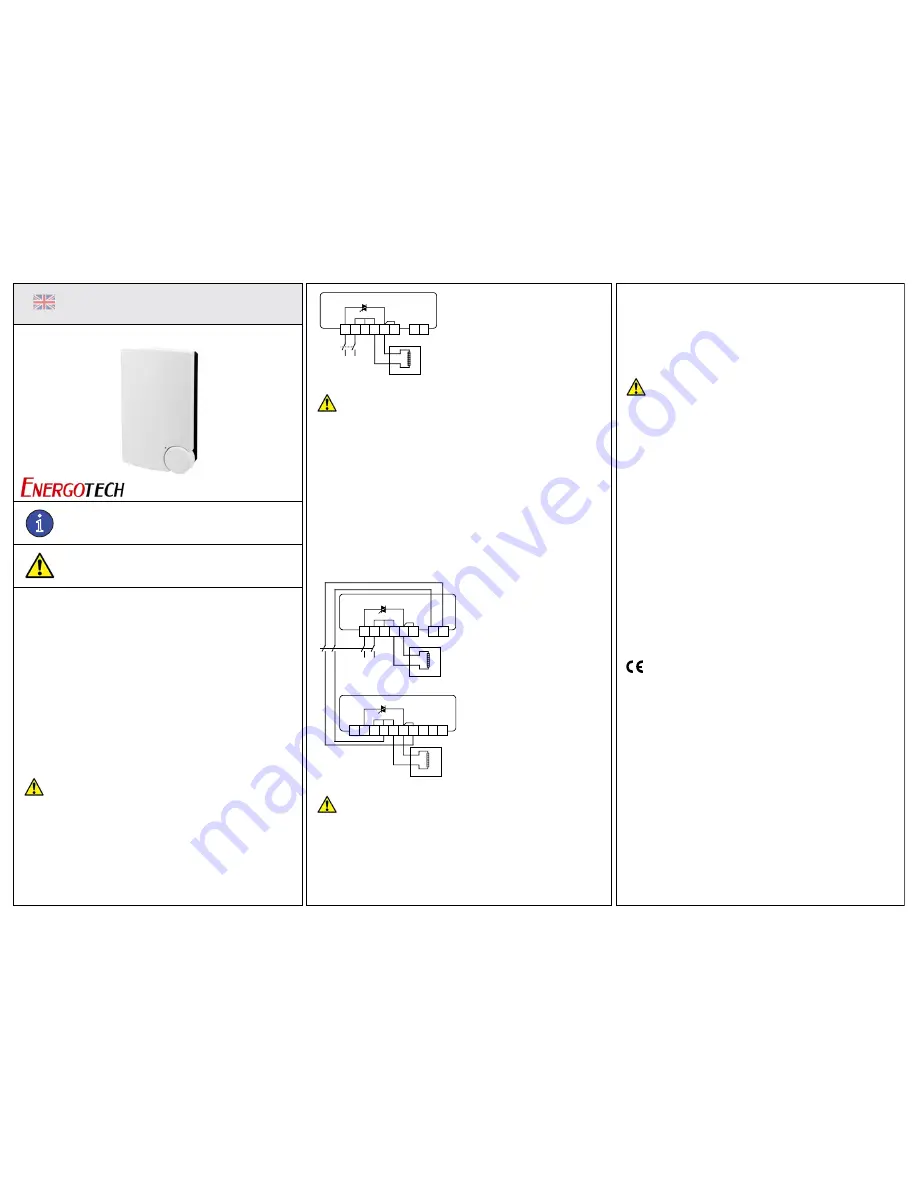
i
Read this instruction before installation
and wiring of the product
EVR-ADD
Consult documentation in all cases where this symbol
is used, in order to find out the nature of the potential
hazards and any actions to be taken
1
INSTRUCTION
EV
R-ADD
Triac controller for proportional control
of electric heating, add-on unit
R
-ADD is a complete proportional controller for electric heating. It
has automatic voltage adjustment. It has no sensor input but is
intended to be controlled by another
R
unit.
R
-ADD is only intended for electric heating control. The control
principle makes it unsuitable for motor- or lighting control.
EVR-ADD
cannot control 3-phase loads.
Installation
Remove the front. The locking screw is behind the set-point knob.
Mount E R‑ADD vertically with the cooling flange at the top. Use
screws with a maximum head diameter of 5.5
mm.
R
-ADD emits approx
e
20W of heat which must be
dissipated. Ambient temp
e
: 0 - 30°C, non-condensing.
Protection class: IP20.
Wiring
Supply voltage
Terminals 1 and 2. Not polarity sensitive.
Supply voltage: 200 - 415V AC, 50 - 60 Hz with automatic voltage
adjustment. Maximum current 16A.
Control principle
R
-ADD pulses the full load On - Off parallel to the master unit it is
connected to.
E R‑ADD has zero phase‑angle firing to eliminate RFI.
Start-up and fault finding
Be careful when working in the
R
-ADD. All internal
components including the cooling flange are at line voltage potential.
Never leave the unit under power without the front cover on.
1.
Check that all wiring is correct.
.
Measure the resistance between terminals 3 - 4: At 230V:
14.4
Ω
<R<230
Ω
. At 400V:25
Ω
<R<400
Ω
.
.
Connect supply voltage and twist the setpoint knob of the master
unit between end stops. Check that the LED which can be seen
through the underside of
R
-ADD goes on and off at the
same
time as the LED of the master unit. Check with a clamp-on
ammeter that current is flowing to the heater.
Anything wrong?
1.
Disconnect supply power. Remove the control signal wiring from
terminals I and I. Reconnect power. The LED should be continu-
ously off and no current should flow to the heater. Disconnect
power and connect the terminals I and I to the terminals 1 and 2.
Reconnect power. The LED should be continuously on and full
current should flow to the heater.
.
If everything is OK this far the
R
-ADD is OK and the fault
must be found elsewhere.
Low Voltage Directive (LVD) standards
This product conforms to the requirements of the European Low
Voltage Directive (LVD) 2006/95/EC through product standards
EN 60730-1 and EN 60730-2-9.
EMC emissions & immunity standards
This product conforms to the requirements of the EMC Directive
2004/108/EC through standards EN 61000-6-1 and EN 61000-6-3.
RoHS
This product conforms to the Directive 2011/65/EU of the European
Parliament and of the Council.
Contact
e
e
AB, Box
0
,
- 00
4
1
, Sweden
Tel
e
e
: +46
0
66
0
info@
e e
e
.
e
.e e
e .
1882G
OCT
14
EN
I
I
1 2 U 3 4 U
Figure 1: Wiring of supply voltage and load
The supply voltage to
R
-ADD should be wired via an all-pole
switch with a minimum contact gap > 3mm. The cooling flange is live.
Load
Terminals 3 and 4.
Resistive single- or two-phase heater
Maximum load:
3680W at 230V (16A)
6400W at 400V (16A)
Minimum load:
230W at 230V (1A)
400W at 400V (1A)
Control signal
Terminals I and I. Not polarity sensitive.
Wire to terminals U and U in the main unit.
E R...
E R-ADD
1 2 U 3 4 U
I
I
K 1 2 U 3 4 U K G G
Figure 2: Wiring of control signal
R
-ADD is galvanically separate from the main unit.
They may therefore be supplied from different phases. The
R
-ADD
control signal has high potential compared to neutral and earth (>200V).
Thus, wiring of the control signal must comply with local codes for line
voltage installations. The control signal must be wired so that the signal is
cut when the supply voltage is cut.
Rev. 06-17

